
OR
Ruins of earthquake
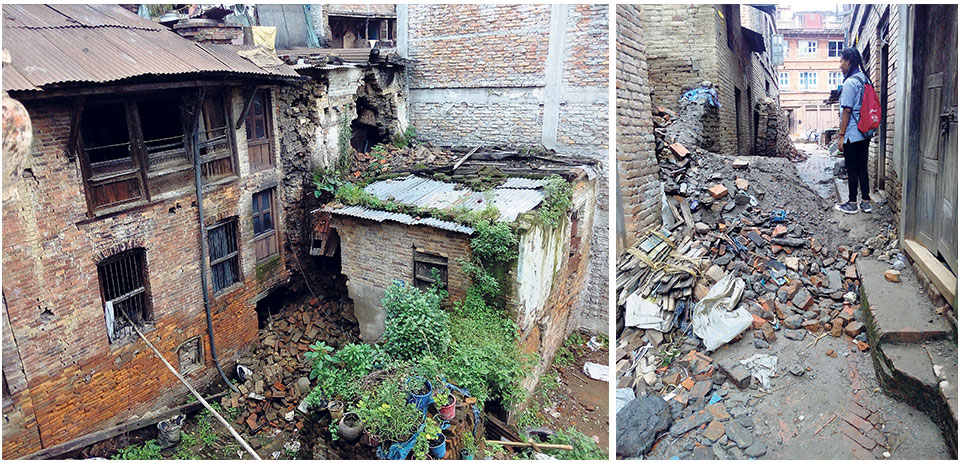
BHAKTAPUR, July 18: The earthquake of April 2015 had rendered Astamaya Manandhar's house fragile. Each monsoon, since then, further affected the integrity of house. This monsoon the house collapsed. The ruins of her house, which stood in the narrow alley of Golamti, Bhaktapur, have blocked the passage and made it inconvenient for passerby and dozens of families living in the area.
"There were no passerbies on the street when the house collapsed. Or else, they would have been injured or killed. Even now, passerby could get hurt while negotiating their way through the ruins. It is very dangerous to walk through rubbles," noted a local Krishna Bhakta Suwal. "It has been over three years since the earthquake destroyed our life. Still we are yet to overcome the damages it did to our lives and property. As you can see, it continues to hit us here in Bhaktapur even today. We are not safe," he added.
The district was severely affected by the earthquake. Old houses and settlements were mostly affected the earthquake. While most of those houses made of mud and bricks collapsed immediately, houses that were partially damaged survived. Though some families moved into safer residences, some families continue to live in such partially damaged houses.
Though they might have lived in the house safely so far, they should be aware that their houses could collapse anytime during the monsoon. It would be wise for such residents to move out and take their families to safer places to ensure their safety.
"Post earthquake, it took months for us to get back to normal life. The biggest challenge was to find safer areas to relocate. Many families managed to find new residences, but some, who had no choice continued to living in their partially damaged fragile houses," narrated Suwal.
"Some of the families, who were living in their partially damaged house, moved into safer residences over the years after realizing that their houses were turning fragile. They realized that the passing of the time, walls and roof of their houses were becoming even more fragile," he reported.
There are dozens of such fragile houses in several alleys of Bhaktapur, Suwal claimed. They look too fragile to last even a few more days. In most cases there are no residents in such fragile houses, but there are families who are still living in them. Most of these families are living in such risky residences because they could not afford shifting elsewhere, Suwal shared.
"In some alleys, you will not find even a single human. There are clusters of houses that are fully abandoned by their inhabitants. All you will find is ugly ruins, rubles and houses that are severly damaged," he said adding that even after three years, neither locals, nor the administration has done enough to clean those ruins.
"There are some houses that you feel are safe to reside, if you look at the interior. However, if you look at the exterior of these houses, you will realize that they can crumble down any moment," Suwal observes. Most of the houses in the densely populate alleys are being supported by wooden pillars. Locals had put these pillars to support the walls and avert them from crumbling in the immediate aftermath of the earthquake due to aftershocks. They were supposed to be removed, the house demolished in a safe manner. However, so far, nothing has been done in this regard and such houses remain a threat to public security, Suwal asserted.
"If you consult an engineer on the safety of these houses, they will never allow you to live in them. Most of these houses are unsafe to reside. However, some people are still residing in them," he explained.
Such instances are not specific to Bhaktapur alone. Old houses in Patan area of Lalitpur that were made fragile by the earthquake still stand limping on the support of timber poles. And like Bhaktapur, some of these houses are still occupied by families.
"Though they might have lived in the house safely so far, they should be aware that their houses can collapse during monsoon. It would be wise for such residents to move out and move to safer places to ensure their family's safety," Suwal said.
Dhruba Gaida, chief of Local Infrastructure and Central Level Project Implementation Unit of National Reconstruction Authority, also shared similar concerns. Elaborating on why such houses are still allowed to remain in place, Gaida said that while demolishing such structures coordination with owners of houses in the cluster is also necessary. He shared that if a house in a cluster is removed, it would weaken structural integrity of other houses in the cluster. “Therefore it is not easy to demolish those houses.”
"The houses are constructed in such a way that their structural integrity depends on each other. If you remove a house from the cluster, it will weaken other houses as well. While some houses are abandoned, families continue to live in some of the. If you intervene with one house, other houses will be affected and the entire cluster could crumble," Gaida explained. He said that quake victims are themselves responsible for demolishing their houses and removing the debris. “If they can't do it on their own, than they can seek assistance from their municipality for managing the debris. And in case, the municipality also cannot handle the matter, than the case if referred to us,” he said.
You May Like This

Only 5,565 quake-damaged houses rebuilt in Gorkha
GORKHA, Dec 17: Thirty-two months after the catastrophic earthquake of 2015, only 5,565 of the 60, 815 houses damaged by the... Read More...

Only 5,565 quake-damaged houses rebuilt in Gorkha
GORKHA, Dec 17: Thirty-two months after the catastrophic earthquake of 2015, only 5,565 of the 60, 815 houses damaged by the... Read More...
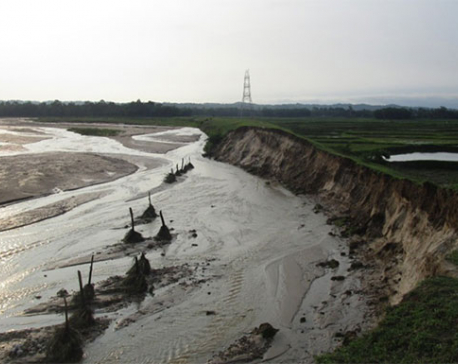
Monsoon batters Saptari, inundates over 125 houses
RAJBIRAJ, June 25: The continuing monsoon has wreaked havoc on the southern part of Saptari district, inundating over 125 houses... Read More...




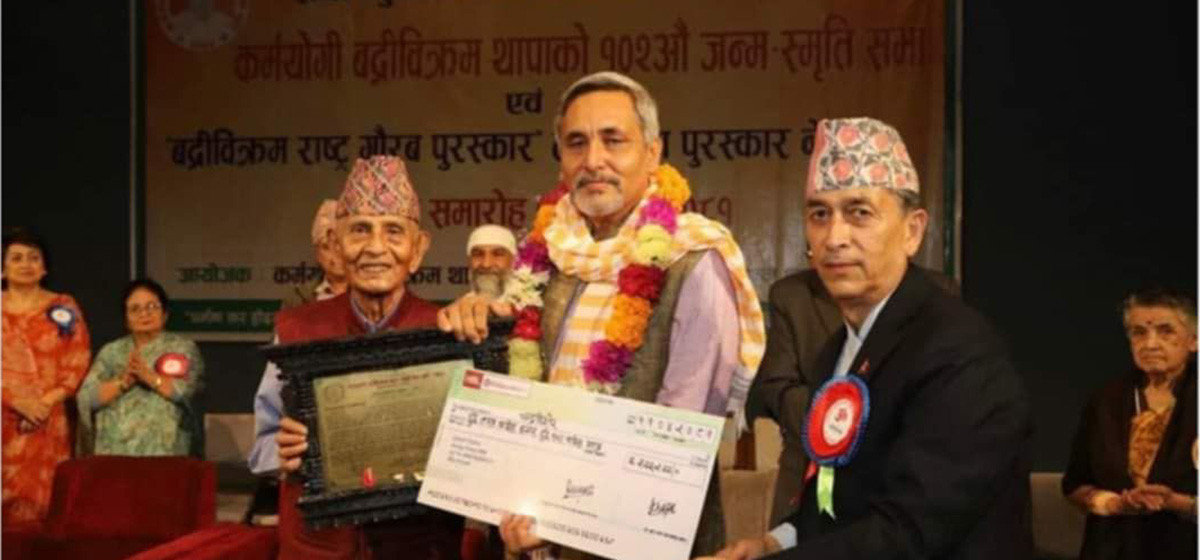
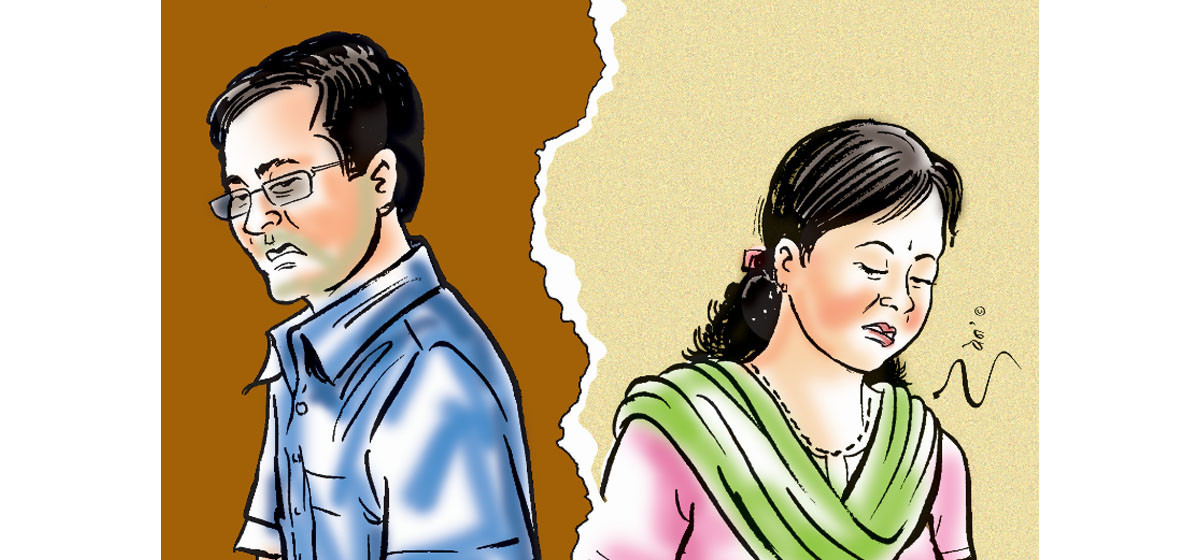
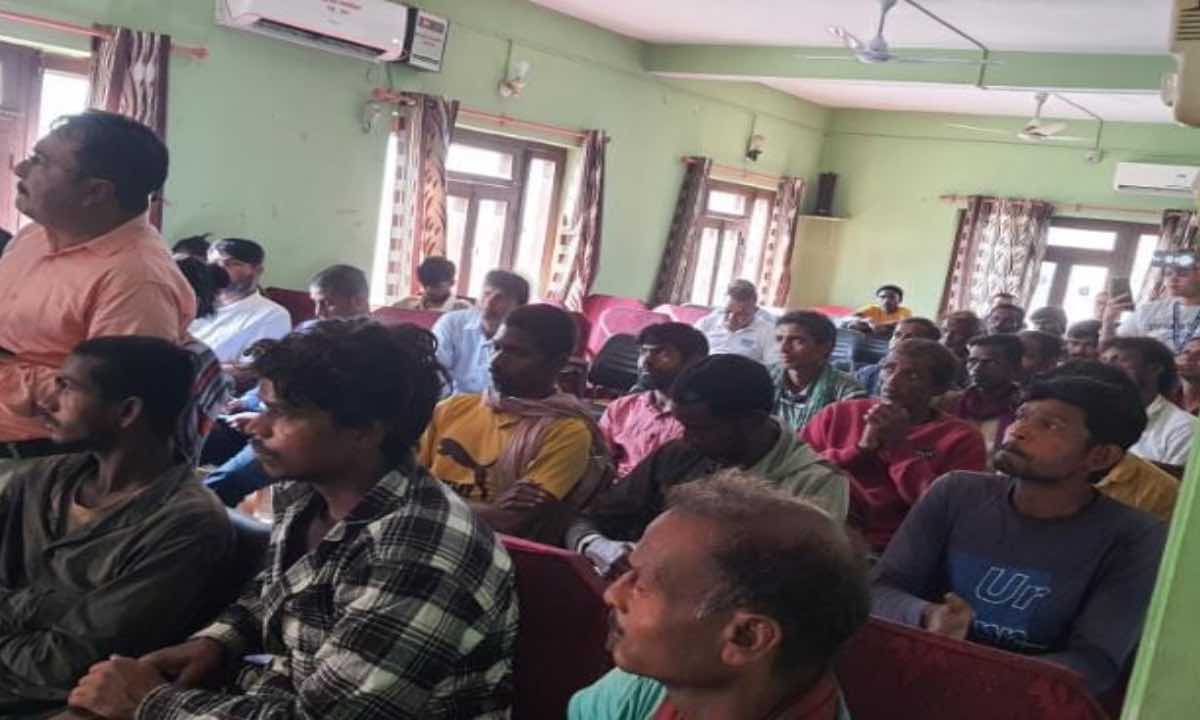

Just In
- Dr Ruit and Journalist Chandra Kishore feted
- Kathmandu records highest number of divorce cases with 13 couples filing for divorce daily
- Rapid response team mobilized in Dhangadhi against cholera outbreak
- 28 workers held hostage in India rescued
- Simaltal bus accident: 40 kg magnet deployed in search for missing bus
- Youth of eight districts lead in foreign employment
- Nepal at high risk of Chandipura virus
- Japanese envoy calls on Minister Bhattarai, discusses further enhancing exchange through education between Japan and Nepal





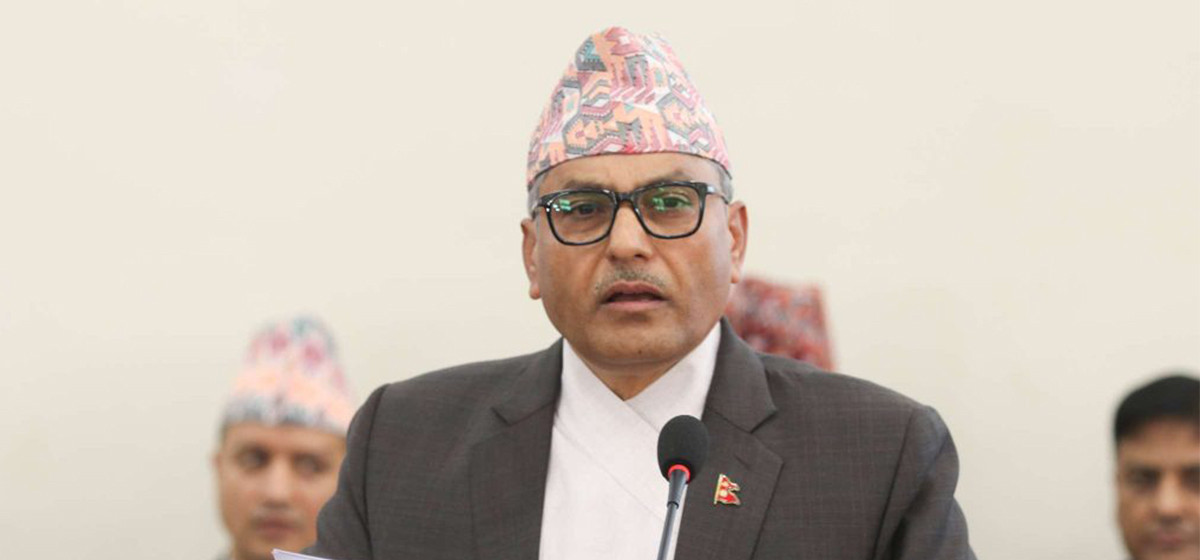


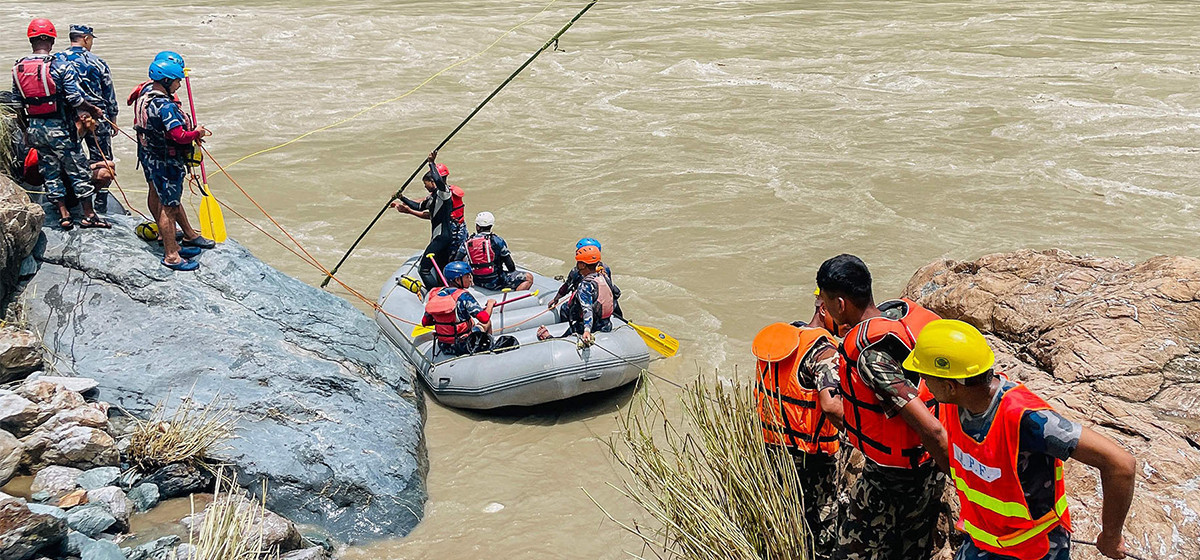
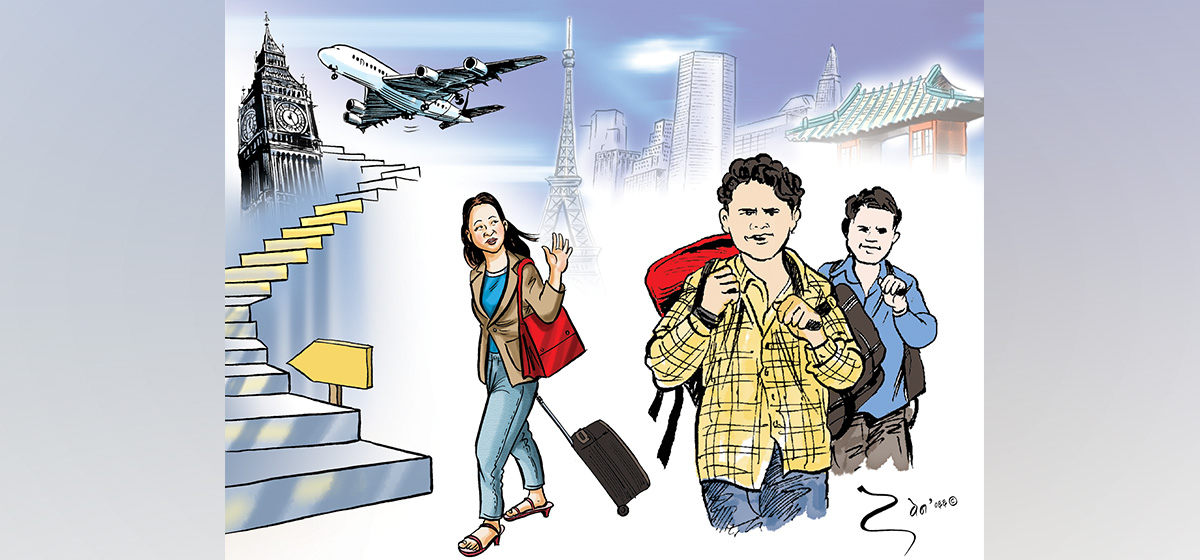

Leave A Comment